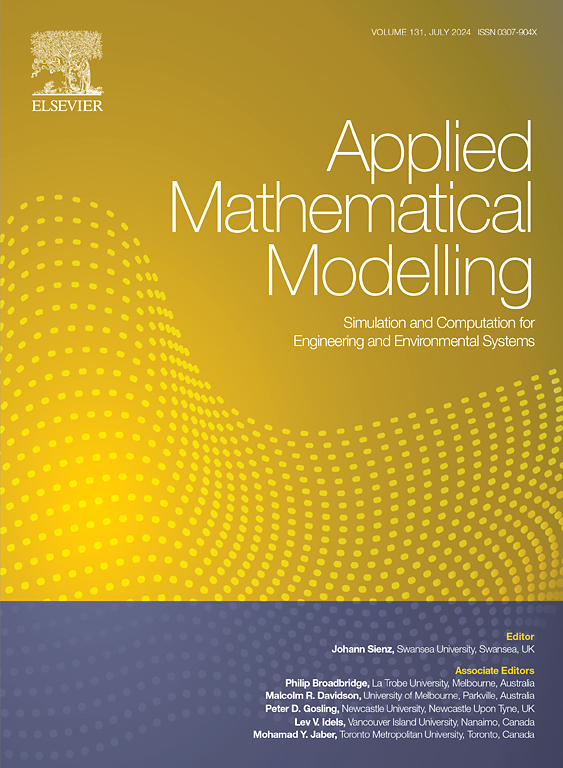SH 波入射条件下隧道空洞截面地震影响区划的数学建模与振动台验证
IF 4.4
2区 工程技术
Q1 ENGINEERING, MULTIDISCIPLINARY
引用次数: 0
摘要
由于受到邻近斜坡几何形状和断裂岩层的影响,隧道门户在地震事件中尤其脆弱。本研究评估了隧道入口的地震响应,并确定了适当的设防范围。采用射线理论计算单面斜坡在入射 SH 波作用下的位移场,同时将隧道入口模拟为弹性地基梁。在考虑隧道与围岩之间的相互作用以及地震波衰减的情况下,得出了箍应变的分析表达式。此外,还进行了参数分析,以研究坡角、地震波长、频率和地基刚度对隧道响应的影响。通过振动台试验验证了理论结果,并揭示了斜坡和隧道的破坏模式。研究结果表明,吊杆和拱脚表现出最高的箍应变响应,确定这些位置为地震易损性的关键点。根据峰值环应变的分布,隧道入口的地震影响区被划分为三个不同的区域。隧道入口的建议加固范围最大可达隧道跨度的 7.5 倍,有效覆盖了峰值应变区域,以减轻潜在的破坏。本文章由计算机程序翻译,如有差异,请以英文原文为准。
Mathematical modelling for seismic affected zoning of tunnel cavity section under SH wave incidence and shaking table verification
Tunnel portals are particularly vulnerable during seismic events due to the influence of adjacent slope geometry and fractured rock formations. This study evaluates the seismic response of tunnel portals and determines an appropriate fortification range. Ray theory is employed to calculate the displacement field of a single-sided slope subjected to incident SH waves, while the tunnel entrance is modeled as an elastic foundation beam. An analytical expression for hoop strain is derived, accounting for the interaction between the tunnel and the surrounding rock, as well as the attenuation of seismic waves. A parametric analysis is also performed to examine the impact of slope angle, seismic wavelength, frequency, and foundation stiffness on the tunnel response. Shaking table tests are conducted to validate the theoretical results and reveal failure patterns in both the slope and tunnel. The findings show that the spandrel and arch foot exhibit the highest hoop strain responses, identifying these positions as critical points of seismic vulnerability. The seismic-affected zones of the tunnel portal are classified into three distinct regions based on the distribution of peak hoop strain. The recommended fortification range for the tunnel portal extends up to 7.5 times the tunnel span, effectively encompassing the areas of peak strain to mitigate potential damage.
求助全文
通过发布文献求助,成功后即可免费获取论文全文。
去求助
来源期刊

Applied Mathematical Modelling
数学-工程:综合
CiteScore
9.80
自引率
8.00%
发文量
508
审稿时长
43 days
期刊介绍:
Applied Mathematical Modelling focuses on research related to the mathematical modelling of engineering and environmental processes, manufacturing, and industrial systems. A significant emerging area of research activity involves multiphysics processes, and contributions in this area are particularly encouraged.
This influential publication covers a wide spectrum of subjects including heat transfer, fluid mechanics, CFD, and transport phenomena; solid mechanics and mechanics of metals; electromagnets and MHD; reliability modelling and system optimization; finite volume, finite element, and boundary element procedures; modelling of inventory, industrial, manufacturing and logistics systems for viable decision making; civil engineering systems and structures; mineral and energy resources; relevant software engineering issues associated with CAD and CAE; and materials and metallurgical engineering.
Applied Mathematical Modelling is primarily interested in papers developing increased insights into real-world problems through novel mathematical modelling, novel applications or a combination of these. Papers employing existing numerical techniques must demonstrate sufficient novelty in the solution of practical problems. Papers on fuzzy logic in decision-making or purely financial mathematics are normally not considered. Research on fractional differential equations, bifurcation, and numerical methods needs to include practical examples. Population dynamics must solve realistic scenarios. Papers in the area of logistics and business modelling should demonstrate meaningful managerial insight. Submissions with no real-world application will not be considered.
 求助内容:
求助内容: 应助结果提醒方式:
应助结果提醒方式:


